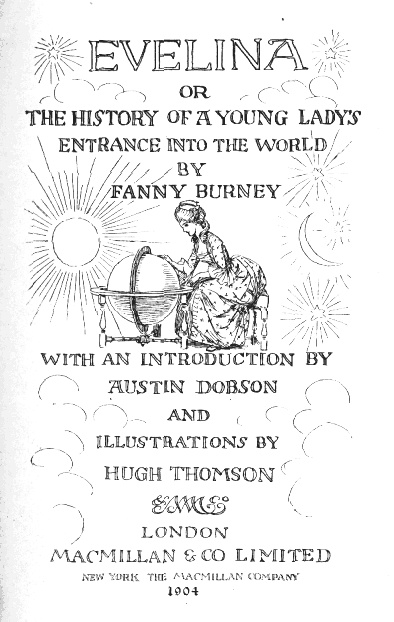Fanny Burney
Today, a tale of two women in an age of technological revolution. The University of Houston's College of Engineering presents this series about the machines that make our civilization run, and the people whose ingenuity created them.
Fanny Burney was an English author and diarist born in 1752 -- 7 years before another famous author, Mary Wollstonecraft. Burney was literary upper-crust. Her father was a great musical scholar, and Fanny knew at an early age that she would also write.
Mary Wollstonecraft came from further down the social ladder. She worked as a governess and first wrote for children. She was a radical who ran with the anti-establishment -- with the American revolutionary and inventor Thomas Paine, the radical scientist Joseph Priestley, the industrialist Josiah Wedgwood.
In 1778, Burney's first novel, Evelina, rocketed her to fame while Wollstonecraft struggled to make ends meet. Evelina was about a young girl entering society, and it was a runaway success.
Ten years later Wollstonecraft wrote her feminist call to arms, Vindication of the Rights of Women, and set the agenda for social change ever since. Five years later she died in childbirth.
Meanwhile the star of the conservative Burney rose. Her books, for and about young ladies, had a focused moral edge. She wrote more freely in her diary and correspondence. She didn't marry 'til she was 39, and gave birth to a daughter three years later.
She survived childbirth but underwent a mastectomy in 1811. I had trouble reading her description of that terrible operation -- done before the invention of anesthesia. You can taste her terror. You can hear the sound of the knife, having reached every nerve ending, finally scraping bone to remove the last of the cancer. But she survived and lived another 29 years.
Neither woman trusted sentiment or had time for people who could weep at a beggar's plight yet do nothing about it. Both ran on ethical imperatives. Wollstonecraft's Christianity was a radical force. On the other hand, we're shocked to learn that Burney's old-world ethics meant keeping her surgery secret while her husband was away on business -- so she wouldn't distract him.
Burney wrote more, but Wollstonecraft was far more influential. In a world where everyone knew everyone, they seem to have been almost unaware of each other. Only late in her life does Burney take one swipe at Wollstonecraft. She speaks of contemporary
... manners which uphold not alone the Rights of man, and the Rights of Woman, but the Rights of Children -- and will, ere long, ... include the Rights of Cats, Dogs, and Mice.
What's missing in Burney's writings is any celebration of creative invention. Wollstonecraft's enemy was orthodoxy. She trafficked with inventors and risk-takers. The two had courage, honor, and talent in common. It took courage to write when women writers were unwelcome. But Burney lacked Wollstonecraft's daring in what she wrote. And, in the end, that made the difference.
I'm John Lienhard, at the University of Houston, where we're interested in the way inventive minds work.
(Theme music)
Devlin, D.D., The Novels and Journals of Fanny Burney. New York: St. Martin's Press, 1987. (Chapter 3, Radical and Conservative, treats the relative roles of Burney and Wollstonecraft.)
Burney, F., The Famous Miss Burney: The Diaries and Letters of Fanny Burney (B.G. Schrank and D.J. Supino, eds.). New York: The John Day Company, 1976.
Wardle, R.M., Mary Wollstonecraft: A Critical Biography, Lawrence: University of Kansas Press, 1951.
Burney, F., The Journals and Letters of Fanny Burney (Madame d'Arblay). Vols. I-IX ( J. Hemlow et al., eds.). Oxford at the Clarendon Press, 1975. (The chilling account of Burney's mastectomy is given in letter No. 595 and the French medical report, Vol. VI, pp. 596-616. The operation took place on Sept. 30, 1811. Her letter was written from March to May of 1812. The doctors' report was written on Oct. 1, 1811.)
Burney, F., Evelina. London; Lowndes, 1778.
I am grateful to Margaret Culbertson, UH Art and Architecture Library, for suggesting Burney as a subject.

Image courtesy of Special Collections, UH Library
The influence of Burney's early writings lasted a long time. This is the title page of a 1904 edition of Evelina.